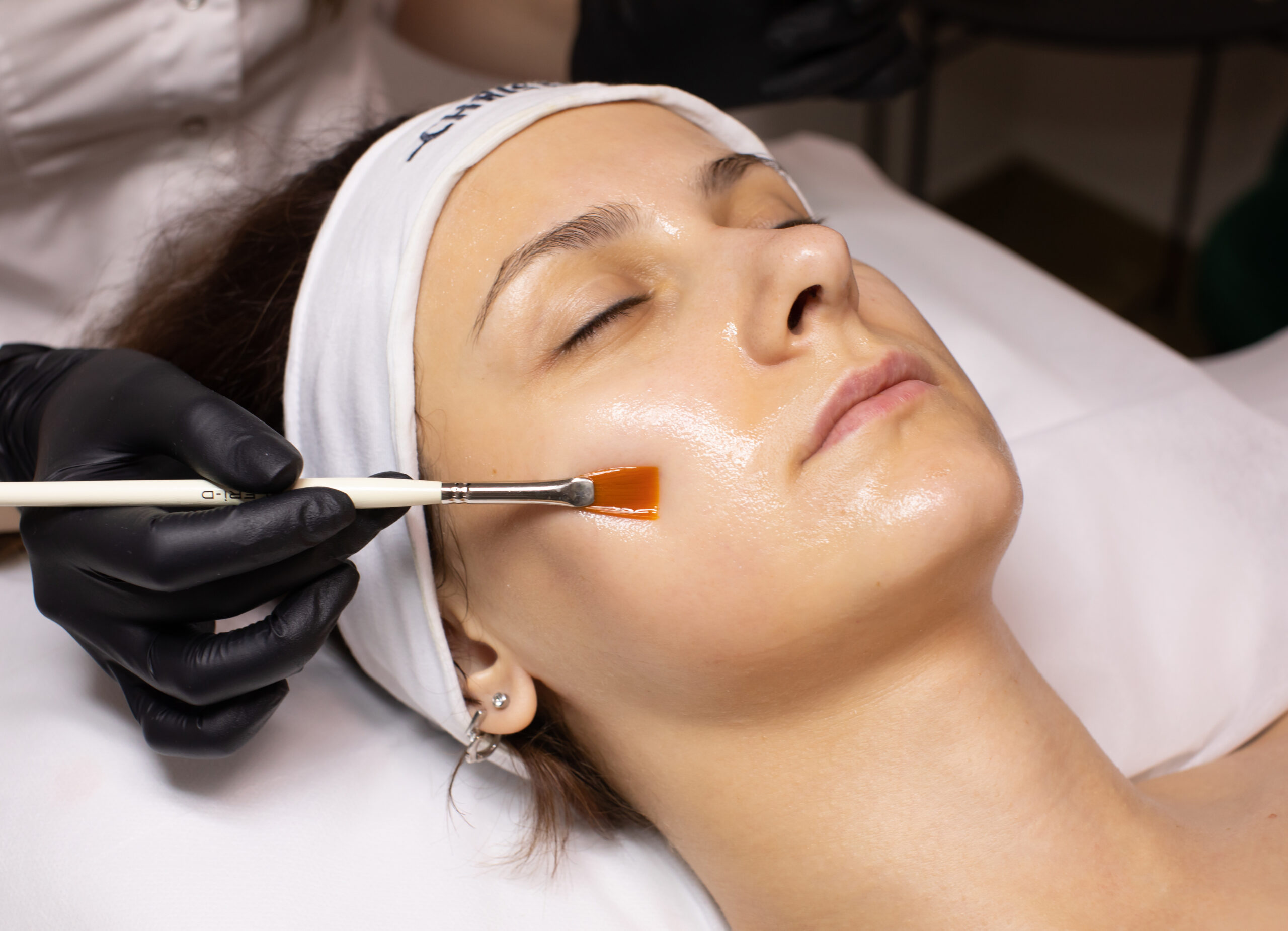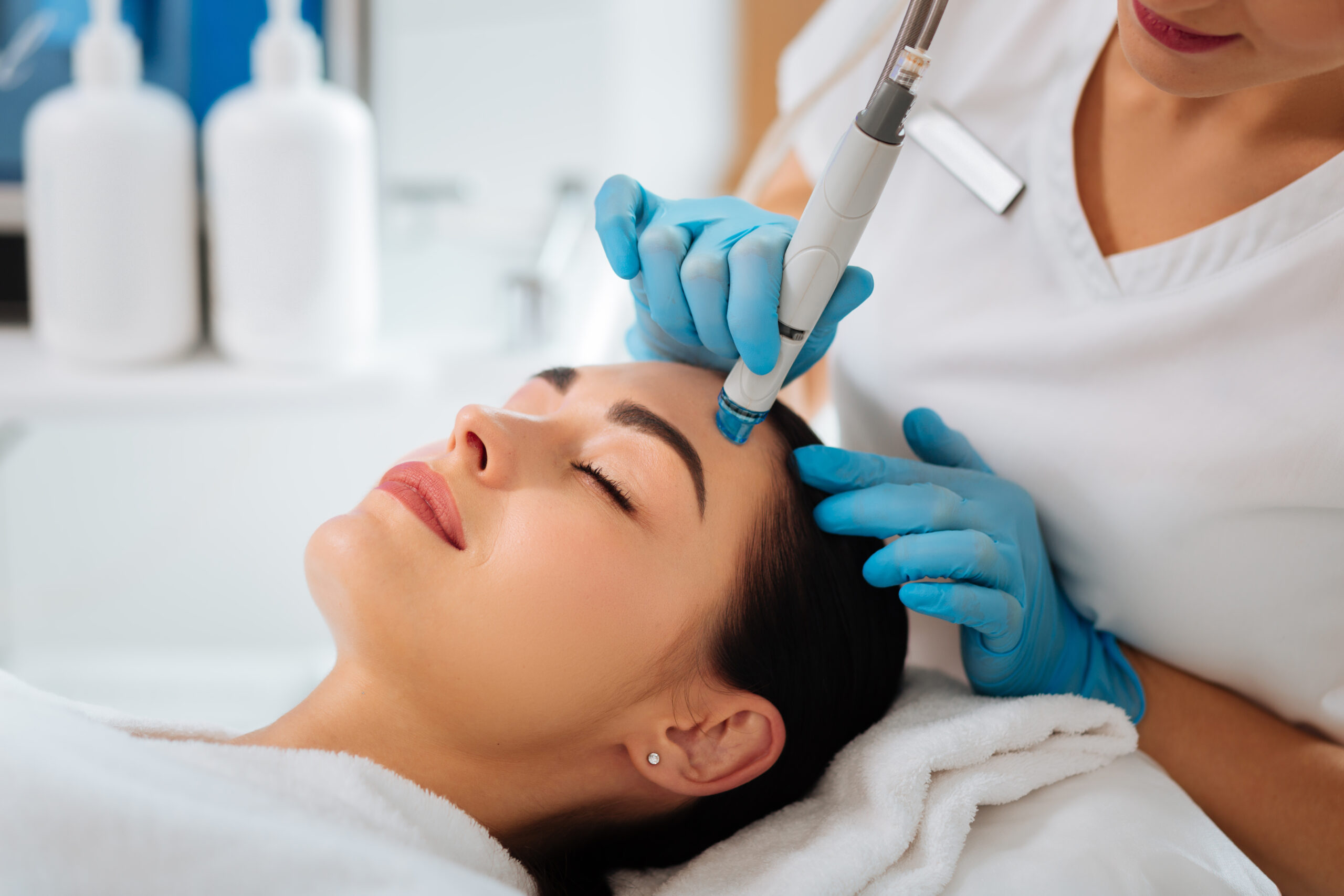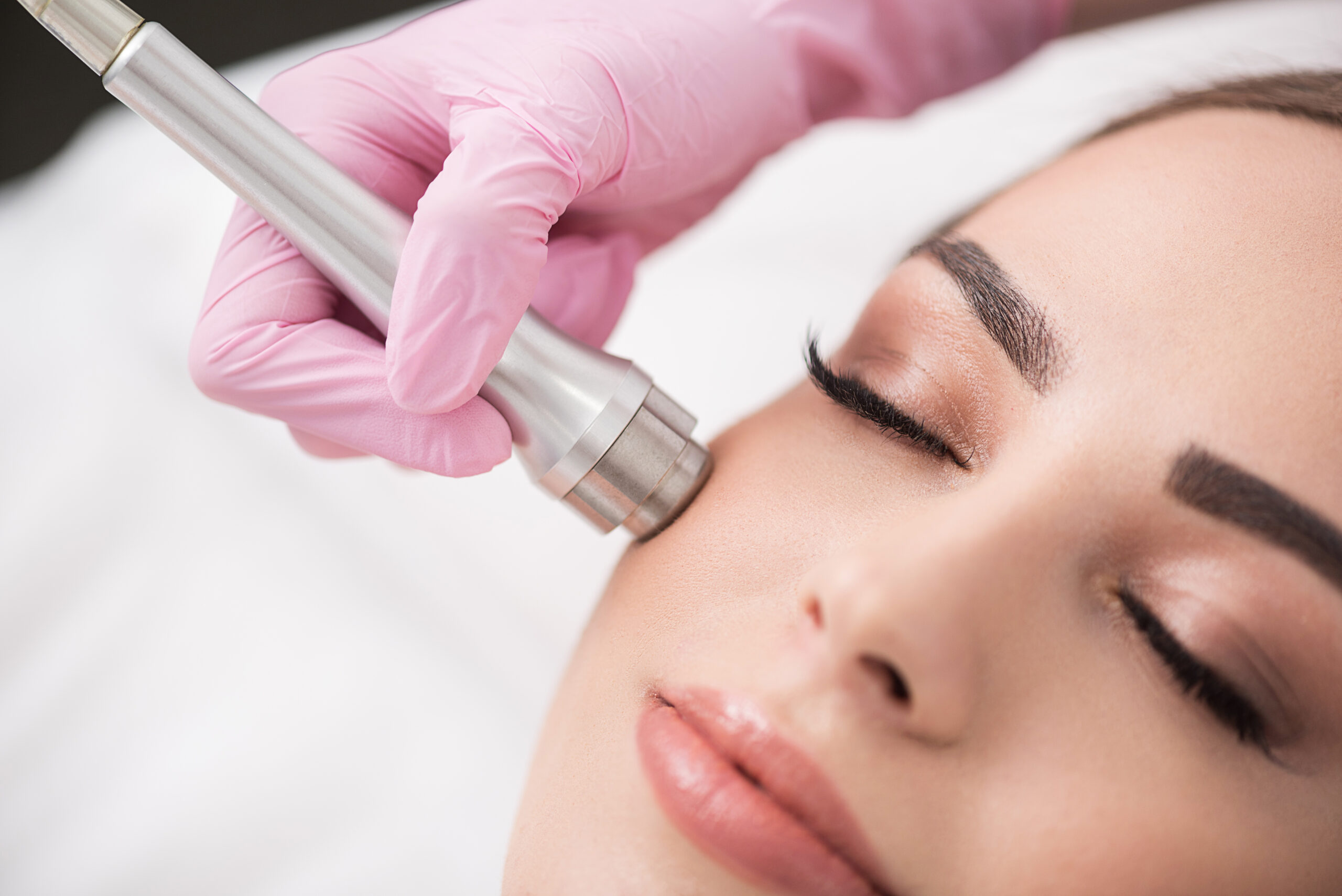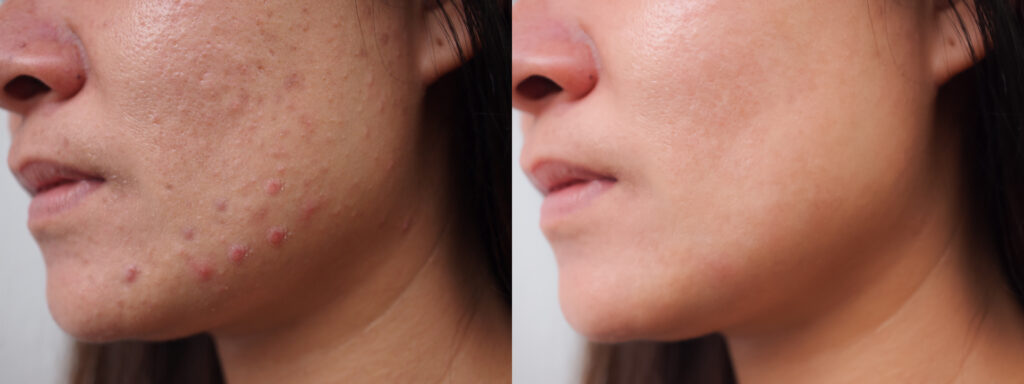Proper care is essential for maintaining the health of our skin, the body’s largest organ. Skin care practices aim to improve skin integrity, appearance, and address any issues.

Your skin is your body’s largest organ—caring for it is essential for both appearance and overall health. A proper skincare routine, combined with good nutrition and sun protection, helps maintain skin integrity, prevent damage, and support long-term wellness.
OTC vs. Medical-Grade Skincare: What’s the Difference?
Understanding the difference between over-the-counter (OTC) and medical-grade skincare helps you make smarter choices for better skin health.
• Formulation & Ingredients
OTC products contain lower concentrations of active ingredients to suit the general public. In contrast, medical-grade skincare uses higher-strength ingredients like retinoids, peptides, and antioxidants—formulated for deeper penetration and more precise results.
• Strength & Efficacy
Medical-grade products deliver stronger, faster results by targeting specific concerns such as wrinkles, acne, and pigmentation. OTC products offer milder effects and work well for general maintenance.
• Professional Guidance
Medical-grade skincare often requires recommendation or supervision from licensed professionals like dermatologists or aestheticians. This ensures a customized routine based on your skin’s needs, unlike OTC products, which are self-selected and less personalized.
• Regulatory Standards
Medical-grade products undergo stricter testing and regulatory oversight for safety and effectiveness. OTC options have fewer regulatory requirements and may not be backed by the same level of clinical research.
• Targeted Treatments
Medical-grade skincare is designed to treat specific conditions—like sun damage, aging, or severe acne—with more advanced and sometimes prescription-strength formulas. OTC products offer broader, less targeted care.
All skin types benefit from daily cleansing and moisturizing, but each type—oily, dry, normal, combination, and sensitive—requires a tailored approach. Identifying your skin type is the first step to choosing the right products and building an effective skincare routine.
Oily Skin
Oily skin produces excess sebum, often leaving a shiny appearance—especially in the T-zone (forehead, nose, and chin). While it may show fewer wrinkles, it’s prone to enlarged pores, acne, blackheads, and whiteheads. Despite its natural oil, oily skin still needs hydration. Use a gentle foaming cleanser to remove buildup and follow with a lightweight, oil-free, non-comedogenic moisturizer to nourish without clogging pores.
Dry Skin
Dry skin lacks natural oils, often appearing dull, rough, or flaky. It can feel tight, itchy, and show fine lines more prominently. Care for dry skin with hydrating, barrier-repairing ingredients like ceramides. Avoid hot showers, use fragrance-free and alcohol-free products, and moisturize frequently throughout the day.
Normal Skin
Normal skin stays balanced—neither too oily nor too dry. It rarely breaks out or feels irritated, with small pores and smooth texture. Even without major issues, maintaining hydration and protecting the skin barrier is key to long-term skin health.
Combination Skin
Combination skin includes both oily and dry areas—typically, oiliness in the T-zone and dryness on the cheeks. Seasonal changes, stress, or hormones can affect it. Balance is essential: use gentle cleansers and lightweight moisturizers that address both needs without over-stripping or clogging the skin.
Sensitive Skin
Sensitive skin reacts easily to environmental factors or certain ingredients, often causing redness, itching, burning, or dryness. This type can overlap with oily, dry, or normal skin. Identify and avoid triggers like fragrances or dyes, and choose soothing, hypoallergenic products. Minimizing exposure to irritants in both skincare and your environment can help calm sensitive skin.
Facial Cleansers: Choosing the Right One for Your Skin Type
A facial cleanser forms the foundation of any skincare routine. It prepares the skin by removing impurities, allowing other products to absorb more effectively.
Gel Cleansers
Gel cleansers feature a jelly-like, transparent texture. They cleanse without stripping moisture, making them ideal for oily or combination skin.
✅ Best for oily or combination skin
Cream Cleansers
Cream cleansers have a rich, thick texture that gently hydrates and soothes the skin. They’re perfect for dry or sensitive skin and work well as a second step in a double-cleansing routine.
✅ Best for dry or sensitive skin
Foam Cleansers
Foam cleansers lather into a rich foam that deeply cleanses and unclogs pores. They combine the benefits of gel and cream cleansers, offering a balanced solution for everyday use.
✅ Best for combination, oily, or normal skin
Cleansing Lotions
Cleansing lotions feel lighter than creams but still cleanse gently and hydrate the skin. You can rinse or wipe them off, making them convenient and effective.
✅ Best for sensitive, dry, or normal skin
Exfoliating Cleansers
Exfoliating cleansers (or scrubs) use small particles to gently remove dead skin cells and impurities, encouraging healthy skin turnover.
✅ Best for oily, combination, or acne-prone skin
Cleansing Water (Micellar Water)
Micellar water offers a lightweight, no-rinse option for removing makeup and dirt. It’s gentle, non-abrasive, and perfect for quick cleansing or travel.
✅ Best for all skin types
Need help picking the right one for your skin? Let’s break it down further by concern or routine style!
Hydration and moisturizing serve different skin needs. Hydration replenishes water in the skin, while moisturizing supports naturally dry skin by sealing in moisture with a protective barrier.
Hydrators pull in and trap water, while moisturizers soften the skin and prevent water loss. Both are key for maintaining smooth, elastic skin. Even oily skin needs hydration, though it may require less moisture.
Most skincare products include ingredients that hydrate and moisturize, regardless of their form—what matters most is the ingredient list.
Let’s explore the key ingredients behind effective hydrators and moisturizers.
Hydration
Humectants are substances that enhance skin hydration by attracting moisture from the surroundings to the skin. Additionally, they have the ability to extract water from the deeper dermal layers and transport it to the outermost epidermal layer of the skin.
Some examples of hydrating substances include:
Moisturizers
If an individual’s natural skin barrier is weakened or compromised, there is a risk of experiencing transepidermal water loss (TEWL), wherein water is lost from the skin through evaporation. This process can be likened to the drying and cracking of the earth when it lacks protection and insulation.
Emollients act as insulation for skin by forming a hydrophobic barrier with varying levels of occlusivity. The ability to act as a hydrophobic barrier over the skin to seal in moisture and improve the skin matrix.
Some examples of emollients substances include:
Most occlusive
Less occlusive
Occlusives that are comedogenic
Layering your skincare products correctly is crucial. Start with lighter products to penetrate the skin, followed by hydrators, and finish with emollient moisturizers. Thicker, creamier products with more lipid content should go on last, acting as a protective coat for the other layers.
Not sure what you need, schedule a consultation with a qualified medical provider or aesthetician to get a personalized skin care regimen.
Topical retinoids and vitamin C deliver powerful results for healthier, smoother, and more radiant skin. Here’s what they do:
Topical Retinoids (Vitamin A Derivatives)
•Boost Collagen: Retinoids stimulate collagen to reduce fine lines and improve firmness.
•Refine Texture: They smooth rough skin, shrink pores, and even out tone.
•Increase Cell Turnover: Faster cell renewal reveals fresher, brighter skin.
•Fight Acne: They unclog pores, calm inflammation, and balance oil production.
Vitamin C (Ascorbic Acid)
•Protect with Antioxidants: Vitamin C defends against free radicals that cause aging.
•Brighten & Even Tone: It fades dark spots and helps reduce hyperpigmentation.
•Support Collagen: Like retinoids, it boosts elasticity and minimizes wrinkles.
•Guard Against Sun Damage: It enhances skin’s defense against UV exposure (but doesn’t replace sunscreen).
When it comes to treating hyperpigmentation and achieving a more even skin tone, three ingredients stand out: hydroquinone, tranexamic acid, and kojic acid. Each offers unique benefits, and when used correctly, they can significantly improve skin clarity.
Hydroquinone
First and foremost, hydroquinone is a powerful skin-lightening agent. It targets dark spots, melasma, and post-inflammatory hyperpigmentation by inhibiting tyrosinase, the enzyme responsible for melanin production. As a result, it fades existing discoloration and helps prevent new spots from forming. However, due to potential side effects with long-term use, always apply it under medical supervision.
Tranexamic Acid
Next, tranexamic acid has emerged as a promising solution for stubborn pigmentation. It works by blocking plasmin, an enzyme linked to inflammation and melanin production. In addition to reducing dark spots, it calms redness and supports a more even complexion. Its dual-action approach makes it ideal for sensitive or inflamed skin types.
Kojic Acid
Finally, kojic acid, derived from fungi, also inhibits tyrosinase to reduce melanin. It treats age spots, sun damage, and uneven tone while offering antioxidant protection against free radicals. Although effective, it may cause sensitivity, so it’s best introduced gradually with a patch test.
Acne affects people of all ages and can take a toll on both confidence and skin health. While treatments vary—from medical prescriptions to cosmetic solutions—facials offer a supportive, non-invasive option worth considering, especially when guided by a skincare professional.
Understanding Acne First
Before exploring facials, it’s important to understand acne’s root causes. Acne develops when hair follicles become clogged with oil, dead skin cells, and bacteria. This blockage can lead to whiteheads, blackheads, pimples, or more severe forms like cysts. Hormonal changes, genetics, certain medications, and excess oil production often contribute to breakouts.
How Facials Help Manage Acne
Facials don’t cure acne, but they can improve skin clarity and reduce breakouts when used consistently. Here’s how:
•Deep Cleansing: Facials remove dirt, oil, and debris more thoroughly than daily washing, helping prevent clogged pores.
•Exfoliation: By sloughing off dead skin cells, facials reduce pore blockages and promote smoother skin.
•Extractions: Professionals safely extract blackheads and whiteheads, reducing the risk of future inflammation and scarring.
•Anti-Inflammatory Support: Many facials use calming ingredients like salicylic acid or soothing masks to reduce redness and swelling.
•Customized Skincare: Skincare pros assess your skin and tailor treatments to your acne type, often recommending effective at-home products.
•Stress Relief: Beyond skincare, facials offer relaxation—helping reduce stress, which can trigger or worsen breakouts.
The Bottom Line
Facials can be a valuable part of your acne management plan, offering both physical and emotional benefits. However, they work best when combined with other treatments, especially for moderate to severe acne. For the most effective results, consult a dermatologist or licensed skincare provider to build a personalized, consistent routine.
Sunscreen vs. Sunblock: What’s the Difference?
Both sunscreen and sunblock protect against harmful UV rays, but they work in distinct ways. Specifically, sunscreen absorbs UV rays using chemical filters, whereas sunblock physically deflects them with ingredients like zinc oxide or titanium dioxide. While sunscreen must absorb into the skin to be effective, sunblock remains on the surface, acting as a physical barrier. Ultimately, both play a vital role in preventing sun damage, premature aging, and skin cancer.
Potential Side Effects
When used properly, sunscreen is generally safe. However, some individuals may experience skin irritation or sensitivity. To minimize risk, it’s important to choose a product that aligns with your skin type—especially if you have sensitive skin. For example, reactions such as contact dermatitis, stinging, or acne may occur due to certain ingredients. Therefore, opt for fragrance-free, dye-free, and non-comedogenic formulas if you’re prone to sensitivity.
Pros and Cons
•Sunscreen: Lightweight, leaves no white cast, but may irritate sensitive skin.
•Sunblock: Gentler and better tolerated by sensitive skin, though it may leave a visible white residue.
•Best Practice: Use a broad-spectrum product that guards against both UVA (aging, deep damage) and UVB (burns, surface damage).
•SPF Tip: The American Academy of Dermatology recommends using SPF 30 or higher. While no sunscreen blocks 100% of UVB rays, a higher SPF does offer more protection.
Bottom Line
In the end, the best sun protection is the one you’ll use daily. Whether you choose sunscreen or sunblock, look for broad-spectrum coverage and a formula that suits your skin type. Consistency is key to protecting your skin from long-term sun damage.




